|
My watchmaker told me
that if I got the Reduced o NOT bring it to him. That
piggyback design is a real bear to work on.
Most watchmakers
simply send back the chronograph module and have a new
one sent at a $140 charge (this price was mentioned a
couple of years ago, it may have changed)... The dicey
nature of the DD module is so well known that it's a
"No-Questions asked" replacmeent policy. This is straight
from Frank N, RJ's watchmaker and several other
independent North American sources.
That's the same as the
Dynamic Chrono, isn't it?
Well, it's the
two-register version of the Dubois-Dépraz Chrono
Module (2020
instead of 2030).
Lemania also made a
Piggyback Chronograph modules used on the same basic ETA
movement as the reduced...
Which leads me to another
topic I've been thinking about expounding upon for some
time...
The visual identification of
3-Register Chronograph movement via Sub-Dial Placement...
Here is a short primer...
Manual wind, Tri-Compax
(Small Seconds at 9, Hour Register at 6, Minute Register
at 3):
This is the most popular
sub-dial layout for classic chronographs, as a result
many firms through the years produced movements with this
sub-dial arrangement. Among them the Lemania 321 (2320
currently), 187s Series (as seen in the Moonwatch),
Lemania ¿1278? (used in 1960's Tissot's and
Lemania's, is a hybrid of 321/861 features), the Valjoux
72 series, Valjoux 7736, Venus 178, numberious Universal
Geneve's, Excelsior Park's, Zenith HP 146,
etc.
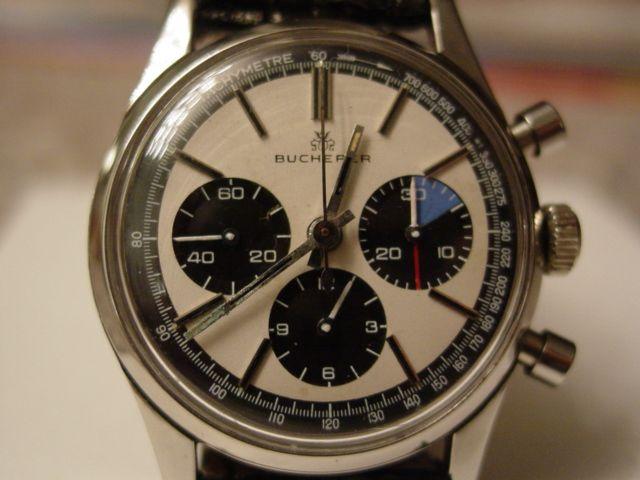 - Bucherer
featuring Lemania 873 movement.
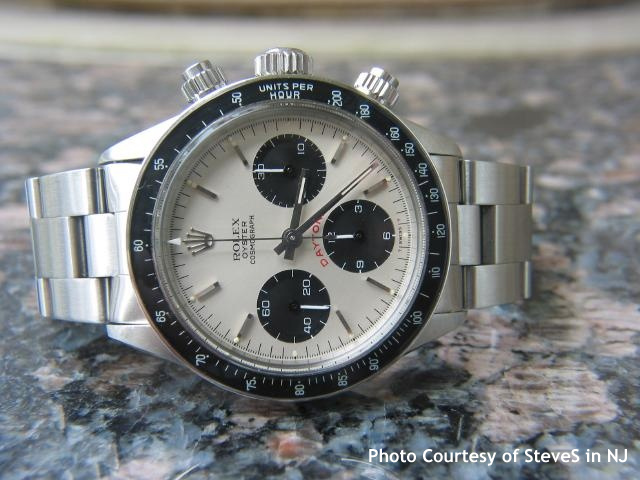 - Rolex
Daytona 6263 featuring Valjoux 722 movement (photo
courtesy SteveS in NJ)
 - Heuer
Autavia featuring Valjoux 7736
movement
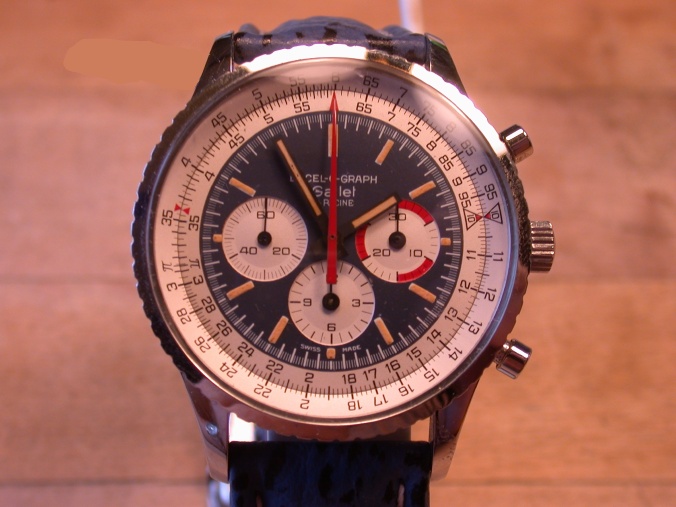 - Gallet
Excel-o-Graph featuring Excelsior Park 40/68
Movement
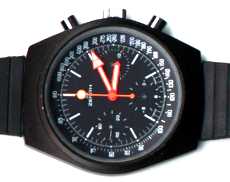 - Zenith
Chronograph featuring Zenith HP 146
movement
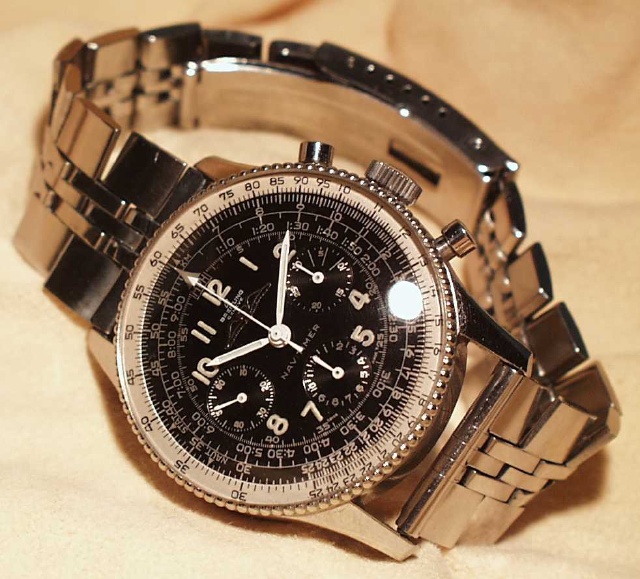 - Breitling
Navitimer featuring a Venus 178
movement
 - Universal
Geneve featuring a Universal c.283
Thus it's really difficult
to determine for certain what movement lies behind a
manual wind chronograph with the Tri-Compax
layout.
Automatic,
"Quasi-Tri-Compax" layout (Small seconds at 3,
minute register at 9, hour register at 6), can
also be manual wind with the substraction of the
rotor:
Only the ETA
298x/Dubois-Dépraz 2030's and variations have this
layout. For the most part if you see a Tri-Compax Layout,
but it has a small-seconds at 3 instead of 9 it's an
ETA-DD Piggy Back Movement of some
stripe...

Unless the
manufacturer took a Valjoux 7750 and rotated the movement
180 Degrees in it's case to give the pushers a
"Micro-Rotor" placement to the subdials like this
Ikepod:
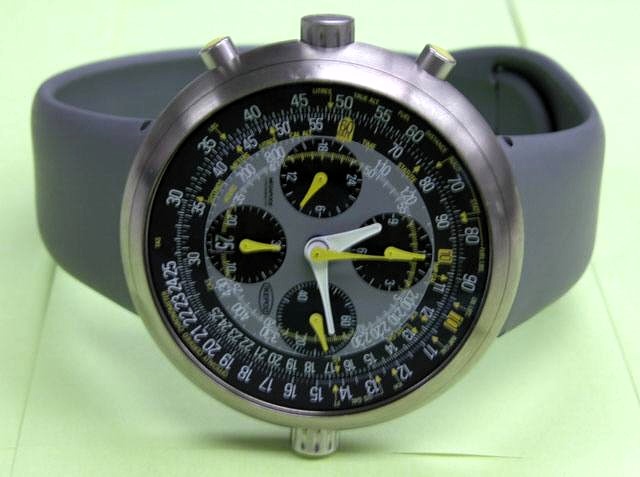
This Ikepod features a
Valjoux 7750 with a 24-hour dial complication rotated 180
degrees in it's case (for the ease of use of the under
crystal Slide Rule Bezel...
There are a number of
companies using this movement, not only Omega, TAG-Heuer
among the mid-ranged luxury tier but many smaller firms,
a great number of complications seem to be appearing on
watches utilizing this movement, one of the more popular
is a "Big Date" at 12. But the small seconds at 3 is a
give away on nearly all of them.
Automatic, Tri-Compax
layout (Small Seconds at 9, Hour Register at 6, Minute
Register at 3):
Zenith El-Primero, Rolex
4130 (new Daytona), Valjoux 7750m (new Tri-Compax layout
version).
 - Zenith El-Primero
3019
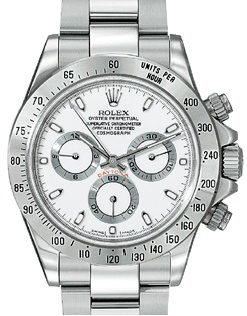
- Rolex Daytona with the
new 4130 movement (note the 9 and 3 sub-dial pinions
are above the centerline of the watch... This is how
you distinguish between the older El-Primero based
Daytona's and the new Rolex movement
models.
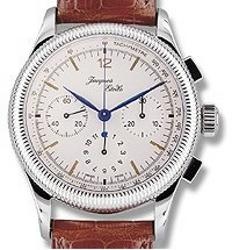
I own several of them,
Heuer (and later TAG-Heuer) used them extensively in
Pilot's model Automatics and some varieties of 2000
series in the 1980's and 1990's... Other manufacturers
used them too, including Eterna...
And Doxa recently found a
cache of them and came out with a new limited production
run featuring this movement:
|











